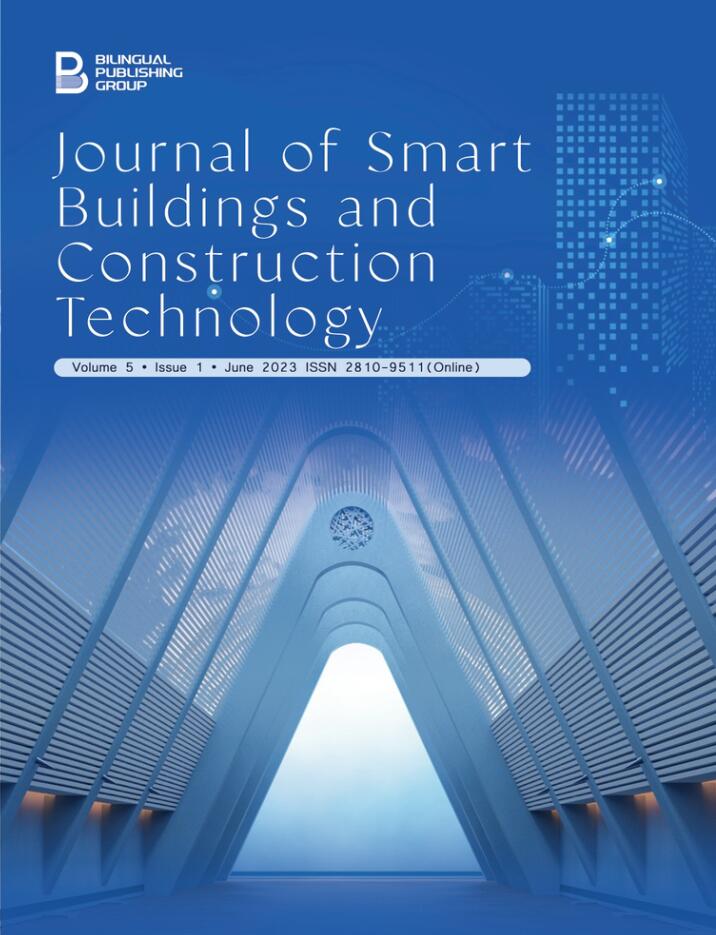-
155
-
155
-
144
-
121
-
92
Modeling the Impact of Testing Mode on the Viscoelastic Behavior of Asphalt Concrete
DOI:
https://doi.org/10.30564/jsbct.v5i1.5514Abstract
The variations in the viscoelastic behavior of asphalt concrete due to testing mode is assessed and modeled in the present investigation. Asphalt concrete mixture was prepared at its optimum binder requirement and compacted in slab mold with the aid of roller compaction. Beam specimens of 62 mm width, 400 mm length, and 56 mm depth were extracted from the slab samples and tested using controlled stress and strain techniques under dynamic flexural stresses. The viscoelastic properties such as the cumulative dissipated energy, phase angle, flexural stiffness, micro strain, and permanent deformation were monitored and modeled among the two testing techniques. It was observed that higher permanent deformation and micro strain are detected when the test was conducted under constant strain mode. However, higher phase angle, flexural stiffness, and energy dissipation could be observed under constant stress mode of test.
Keywords:
Stress; Asphalt concrete; Constant strain; Phase angle; Cumulative dissipated energy; Flexural stiffness; DeformationReferences
[1] Sarsam, S.I., 2023. Variation in asphalt concrete properties with testing mode. Discovery. 59, e7d1010.
[2] Artamendi, I., Khalid, H., 2005. Characterization of fatigue damage for paving asphaltic materials. Fatigue & Fracture of Engineering Materials & Structures. 28(12), 1113-1118.
[3] Sudarsanan, N., Kim, Y., 2022. A critical review of the fatigue life prediction of asphalt mixtures and pavements. Journal of Traffic and Transportation Engineering (English Edition). 9(5), 808-835. DOI: https://doi.org/10.1016/j.jtte.2022.05.003
[4] Ghuzlan, K.A., Carpenter, S.H., 2000. Energy-derived, damage-based failure criterion for fatigue testing. Transportation Research Record. 1723(1), 141-149.
[5] Isailović, I., Falchetto, A., Michael, P., et al., 2015. Energy dissipation in asphalt mixtures observed in different cyclic stress-controlled fatigue tests. 8th RILEM International symposium on testing and characterization of sustainable and innovative bituminous materials. Springer: Netherlands. pp. 693-703.
[6] Pasetto, M., Baldo, N., 2017. Dissipated energy analysis of four-point bending test on asphalt concretes made with steel slag and RAP. International Journal of Pavement Research and Technology. 10(5), 446-453. DOI: https://doi.org/10.1016/j.ijprt.2017.07.004
[7] Rajbongshi, P., 2009. A critical discussion on mechanistic-empirical fatigue evaluation of asphalt pavements. International Journal of Pavement Research and Technology. 2(5), 223-226.
[8] Shiozawa, D., Inagawa, T., Washio, T., et al., 2017. Accuracy improvement in dissipated energy measurement by using phase information. Measurement Science and Technology. 28(4), 044004.DOI: https://doi.org/10.1088/1361-6501/28/4/044004
[9] Yu, J., Zou, G., 2013. Asphalt pavement fatigue cracking prediction model with mode factor. International Journal of Pavement Research and Technology. 6(2), 123-129. DOI: http://Doi:10.6136/ijprt.org.tw/2013.6(2).123
[10] Hosseini, H., Darban, A., Fakhri, K., 2009. The effect of geosynthetic reinforcement on the damage propagation rate of asphalt pavements. Transaction A: Civil Engineering. 16(1), 26-32.
[11] Shen, S., Airey, G.D., Carpenter, S.H., et al., 2006. A dissipated energy approach to fatigue evaluation. Road Materials and Pavement Design. 7(1), 47-69.DOI: https://doi.org/10.1080/14680629.2006.9690026
[12] Adhikari, S., You, Z., 2010. Fatigue evaluation of asphalt pavement using beam fatigue apparatus. Technology Interface Journal/Spring. 10(3).
[13] Shafabakhsh, G., Akbari, M., Bahrami, H., 2020. Evaluating the fatigue resistance of the innovative modified-reinforced composite asphalt mixture. Advances in Civil Engineering. 1-10. DOI: https://doi.org/10.1155/2020/8845647
[14] ASTM, 2015. Standard test method for pulse velocity through concrete. Road and Paving Materials, Annual book of ASTM standards. American Society for Testing and Materials: West Conshohocken, USA.
[15] SCRB, 2003. Standard Specification for Roads & Bridges, State Commission of Roads and Bridges SCRB. Ministry of Housing & Construction: Iraq.
[16] EN 12697-33, 2007. Bituminous mixtures—Test methods for hot mix asphalt—Part 33: Specimen prepared by roller compactor. European Committee for Standardization: Belgium.
[17] AASHTO T321-07, 2007. Standard test method for determining the fatigue life of compacted Hot-Mix Asphalt (HMA) subjected to repeated flexural bending. American Association of State Highway and Transportation Officials: Washington D.C.
[18] Wu, H., Huang, B., Shu, X., 2014. Characterizing fatigue behavior of asphalt mixtures utilizing loaded wheel testers. Journal of Materials in Civil Engineering. 26(1), 152-159. DOI: https://doi.org/10.1061/(ASCE)MT.1943-5533.0000791
[19] Maggiore, C., Airey, G., Marsac, P., 2014. A dissipated energy comparison to evaluate fatigue resistance using 2-point bending. Journal of Traffic and Transportation Engineering (English Edition). 1(1), 49-54.
Downloads
How to Cite
Issue
Article Type
License
Copyright © 2023 Saad Issa Sarsam

This is an open access article under the Creative Commons Attribution-NonCommercial 4.0 International (CC BY-NC 4.0) License.




 Saad Issa Sarsam
Saad Issa Sarsam





